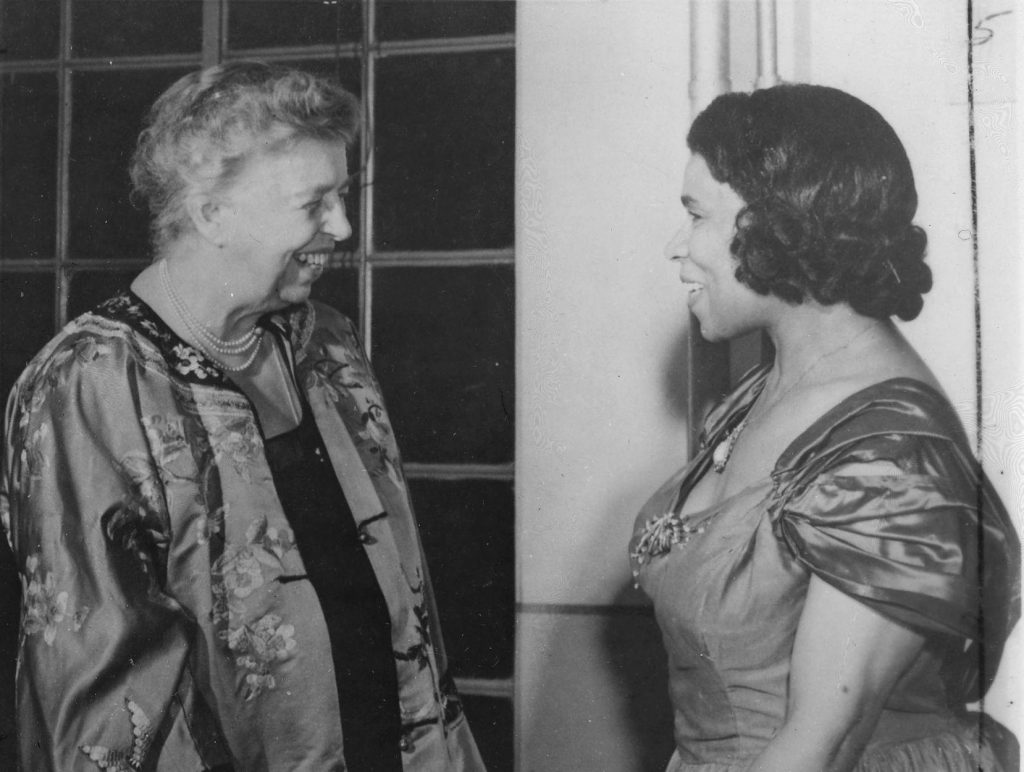
Eleanor Roosevelt and Marian Anderson in Japan, May 22, 1953.
As the curtain closes on Boheme NJ’s production of Guiseppe Verdi’s “Aida” with the final notes, images and sounds still fresh, this column and day honors the memory and life of opera singer Marian Anderson.
Exactly eighty years ago, on Easter Sunday April 9, 1939, Ms. Anderson, a world-renowned contralto, graced more than 75,000 fans with a concert delivered from the steps of the Lincoln Memorial. Anderson had hoped to sing inside Constitution Hall but a “white-artist-only” clause supported by the Daughters of the American Revolution (DAR), denied the talented black songbird entry.
Anderson biographer Allan Keiler noted, “They refused to allow her use of the hall because she was black and because there was a white-artist-only clause printed in every contract issued by the DAR.”
Still, a radio listening audience allegedly reached millions as Anderson offered classical selections, Negro spirituals and “My Country ‘Tis of Thee”, an eloquent rebuttal to the DAR racism, bigotry and discrimination. Anderson had supportive voices, including First Lady Eleanor Roosevelt.
Roosevelt penned an abrupt letter that left no doubt about where she stood on this social matter.
“I am afraid that…”
Read more at:




